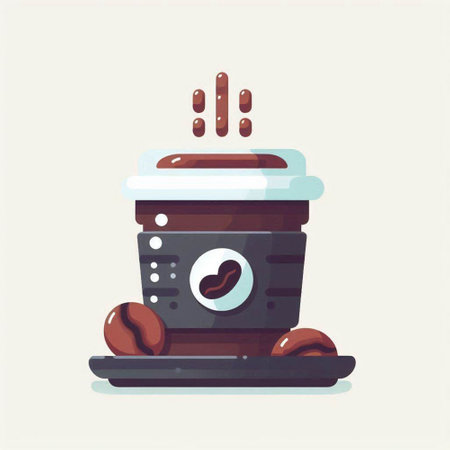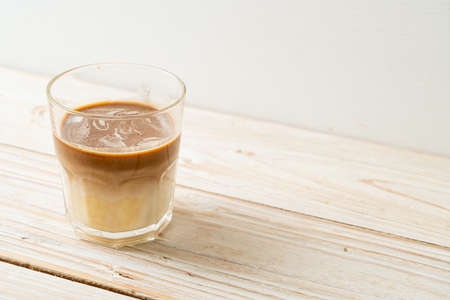Understanding Cold Brew Basics
If you’ve ever wondered why cold brew coffee is popping up everywhere from your local café to big grocery chains, you’re not alone. This smooth, refreshing drink has become a staple in the U.S., especially during those long, hot summers. But what exactly is cold brew, and how does it stand apart from other coffee methods?
What Is Cold Brew?
Cold brew is made by steeping coarsely ground coffee beans in cold or room-temperature water for an extended period—usually between 12 and 24 hours. Instead of using heat to extract the flavors quickly (like with drip or espresso), cold brew relies on time to do the work. The result? A coffee concentrate that’s less acidic, naturally sweeter, and incredibly smooth.
How Is Cold Brew Different From Other Coffee Methods?
| Method | Brew Time | Temperature | Main Flavor Notes |
|---|---|---|---|
| Cold Brew | 12-24 hours | Cold/Room Temp | Smooth, sweet, low acidity |
| Drip Coffee | 5-10 minutes | Hot (195-205°F) | Bright, balanced acidity |
| Espresso | 20-30 seconds | Hot (190-200°F) | Rich, bold, intense flavors |
| Iced Coffee | 5-10 minutes (brewed hot then cooled) | Brewed Hot/Served Cold | Lively acidity, can be bitter if not brewed correctly |
Why Americans Love Cold Brew
The popularity of cold brew in the U.S. isn’t just about its taste—it’s also about convenience and versatility. You can make a big batch ahead of time and keep it in your fridge all week. Plus, it’s easy to customize: serve it over ice, dilute with water or milk, or add a splash of vanilla or caramel syrup for a sweet treat. Whether you’re commuting to work or chilling at home, cold brew fits right into busy American lifestyles and offers a cool caffeine kick without the bitterness.
2. Why Does My Cold Brew Taste Bitter or Sour?
Breaking Down Common Taste Issues
If your homemade cold brew is tasting off—either too bitter or way too sour—you’re definitely not alone. Many Americans love cold brew for its smooth, mellow flavor, but it’s easy to make a batch that just doesn’t hit the mark. Let’s look at what could be going wrong and how you can fix it right in your own kitchen.
What Causes Bitterness or Sourness?
| Issue | Possible Cause | How to Fix It |
|---|---|---|
| Bitter Flavor | Too fine a grind, brewing too long, or using water that’s too hot. | Use coarser coffee grounds, stick to 12-18 hours of steep time, and always use cold or room temp water. |
| Sour Flavor | Under-extraction (not brewing long enough), water that’s too cold, or coffee that’s too fresh. | Steep a bit longer (aim for 16-18 hours), make sure your water is cool but not icy, and let fresh-roasted beans rest for a few days before brewing. |
How to Achieve That Signature Smooth Flavor Americans Crave
Find the Right Coffee-to-Water Ratio
Aim for about 1 cup of coarsely ground coffee to 4 cups of water. This hits the sweet spot for most people—strong but not overpowering.
Get Your Grind Right
A coarse grind looks like breadcrumbs or sea salt. If it’s too fine (like espresso), you’ll end up with bitter notes. Too chunky, and your brew may taste weak or sour.
Time Matters!
The magic window is 12–18 hours in the fridge or on your counter. Too short? You’ll get sour flavors. Too long? It gets harsh and bitter.
Water Quality Counts
If your tap water tastes funky on its own, your cold brew will too! Use filtered or bottled water for best results.
Troubleshooting Quick Reference
| Taste Problem | Quick Fix |
|---|---|
| Bitter Cold Brew | Shorten steep time, use coarser grind, check water temp |
| Sour Cold Brew | Steep longer, try slightly warmer water (but not hot), let beans rest after roasting |
| Weak Flavor | Add more coffee grounds or steep a bit longer next batch |
If you follow these tips, you’ll be sipping on a cold brew that’s smooth, balanced, and totally café-worthy—just the way we like it in America!

3. Dealing with Weak or Watery Cold Brew
If your homemade cold brew tastes more like flavored water than a rich, smooth coffee, you’re not alone. Weak or watery cold brew is a super common issue for many home brewers. The good news? It’s usually easy to fix by adjusting your coffee-to-water ratio and steeping time. Let’s break down why this happens and how to get that bold, café-quality flavor every time.
Why Does Cold Brew Turn Out Weak?
The two main culprits are not using enough coffee grounds or letting it steep for too short a time. Sometimes, the grind size can also play a part—a coarser grind takes longer to extract flavor compared to finer grounds.
Tips to Fix Weak Cold Brew
- Check Your Coffee-to-Water Ratio: Most American-style recipes recommend about 1 cup of coarsely ground coffee to 4 cups of water for a concentrate. If you prefer ready-to-drink strength, use 1 cup coffee to 6-8 cups water.
- Steep Longer: Give your cold brew at least 12-18 hours in the fridge. Less time may lead to under-extraction, which causes that weak taste.
- Adjust After Tasting: If your batch still tastes diluted, try adding more grounds next time or decrease the water slightly.
Coffee-to-Water Ratio Cheat Sheet
| Brew Strength | Coffee (cups) | Water (cups) | Steep Time (hours) |
|---|---|---|---|
| Strong/Concentrate | 1 | 4 | 12-18 |
| Mild/Ready-to-Drink | 1 | 6-8 | 12-18 |
Avoiding Dilution When Serving
If you love pouring your cold brew over ice, remember that as the ice melts, it’ll water down your drink even more. Try making coffee ice cubes: just freeze some of your cold brew in an ice tray and use those cubes instead of regular ones!
Quick Fixes for an Already Weak Batch
- Add a shot of espresso or a splash of brewed coffee to boost the flavor.
- If it’s too late to adjust the steep time, try serving with less ice and add milk or creamer to enhance richness.
- Use it as a base for coffee cocktails or dessert drinks where extra ingredients can help mask weakness.
With these simple adjustments, you can troubleshoot weak or watery cold brew and enjoy a satisfying cup every time—no fancy equipment needed!
4. Gritty Grounds and Cloudy Coffee
Why Your Cold Brew Is Gritty or Cloudy
There’s nothing worse than pouring yourself a glass of cold brew and finding it full of coffee sludge or looking murky instead of crisp and clear. This is a super common issue, especially for folks making cold brew at home. The main culprits? Coffee grind size and filtration method.
The Right Grind Size Makes All the Difference
If your cold brew tastes gritty or you see a lot of sediment settling at the bottom, chances are your coffee grounds are too fine. For cold brew, always use coarsely ground coffee — think breadcrumbs, not flour. Fine grounds slip through most filters, creating that unpleasant texture and cloudiness.
| Grind Size | Result in Cold Brew |
|---|---|
| Coarse (like sea salt) | Clean, clear brew with minimal grit |
| Medium (like sand) | Slightly more sediment, less clarity |
| Fine (like table salt or flour) | Muddy, cloudy brew with lots of grit |
How to Fix Gritty or Cloudy Cold Brew
1. Use the Right Grinder Setting
If you’re grinding beans at home, set your grinder to coarse. Burr grinders work best for an even grind. If you’re buying pre-ground coffee, ask for “coarse” grind — the same as you’d use for French press.
2. Upgrade Your Filtration Game
The filter you use matters just as much as the grind size. Some methods let too many fine particles through. Here are some options:
| Filter Type | Effectiveness for Cold Brew |
|---|---|
| Metal mesh strainer/French press plunger | Okay for coarse grinds but may leave some grit |
| Coffee filter (paper) | Catches most fines, results in clearer brew |
| Nylon nut milk bag/cheesecloth | Good balance: easy to use, catches most sediment |
| Double filtering (mesh + paper) | The clearest result with least cloudiness |
3. Let It Settle Before Pouring
If you’re still seeing some sediment after filtering, let your concentrate rest in the fridge for an hour before pouring — most fines will settle at the bottom and you can carefully decant the top layers.
Troubleshooting Tips at a Glance:
- Always use coarsely ground coffee for cold brew.
- If your drink is gritty, switch to a finer filter like paper or double-filter your batch.
- Avoid shaking or stirring after filtering; let any remaining fines settle before serving.
- If all else fails, try a different brand or type of filter until you get that clean, café-style clarity.
This way, you’ll enjoy every sip of your cold brew — smooth, refreshing, and free of unwanted grit!
5. Storage and Freshness: Keeping Your Brew Tasting Great
One of the key steps to enjoying great-tasting cold brew is making sure you store it properly. If you’ve ever noticed your cold brew tasting off or going stale quickly, chances are it’s due to how it’s kept in the fridge. Let’s break down some simple guidelines to help you keep your homemade cold brew fresh and delicious for as long as possible.
How to Store Cold Brew in the Fridge
The best way to store your cold brew is in a clean, airtight container. Glass jars or bottles work great because they don’t hold on to flavors like plastic can. Always keep your cold brew refrigerated—never leave it out at room temperature for long periods, as this can speed up spoilage and introduce unwanted flavors.
Quick Tips for Storing Cold Brew
- Use a tightly sealed lid to prevent outside odors from getting in.
- Store only what you’ll drink within a week to keep it tasting its best.
- Keep your cold brew away from foods with strong smells (like onions or garlic) to avoid flavor transfer.
Preventing Stale Flavors
Cold brew can develop stale or sour notes if it’s stored too long or exposed to air. To keep those crisp, smooth flavors:
- Don’t mix old and new batches—always clean your container before refilling.
- If you’re adding milk or sweetener, do it just before drinking instead of mixing into the whole batch.
- Avoid reusing coffee grounds; always use fresh grounds for each batch.
How Long Does Homemade Cold Brew Last?
| Type | Fridge Life | Notes |
|---|---|---|
| Undiluted (Concentrate) | Up to 2 weeks | Tastes best within 7 days; freshness fades after that |
| Diluted (Ready-to-Drink) | 3-5 days | Add water/milk only when ready to drink for longer shelf life |
| With Milk/Cream Added | 1-2 days | Dairy shortens freshness; always check for sour smell before drinking |
Troubleshooting Off Flavors After Storage
- If your cold brew tastes musty or flat, it may have been stored too long or not sealed properly.
- A sour taste often means bacteria has started to grow—discard and start fresh!
- If you notice any strange smells, trust your senses and toss it out.
With these storage tips, you’ll be able to enjoy smooth, refreshing cold brew every time you pour a glass!


